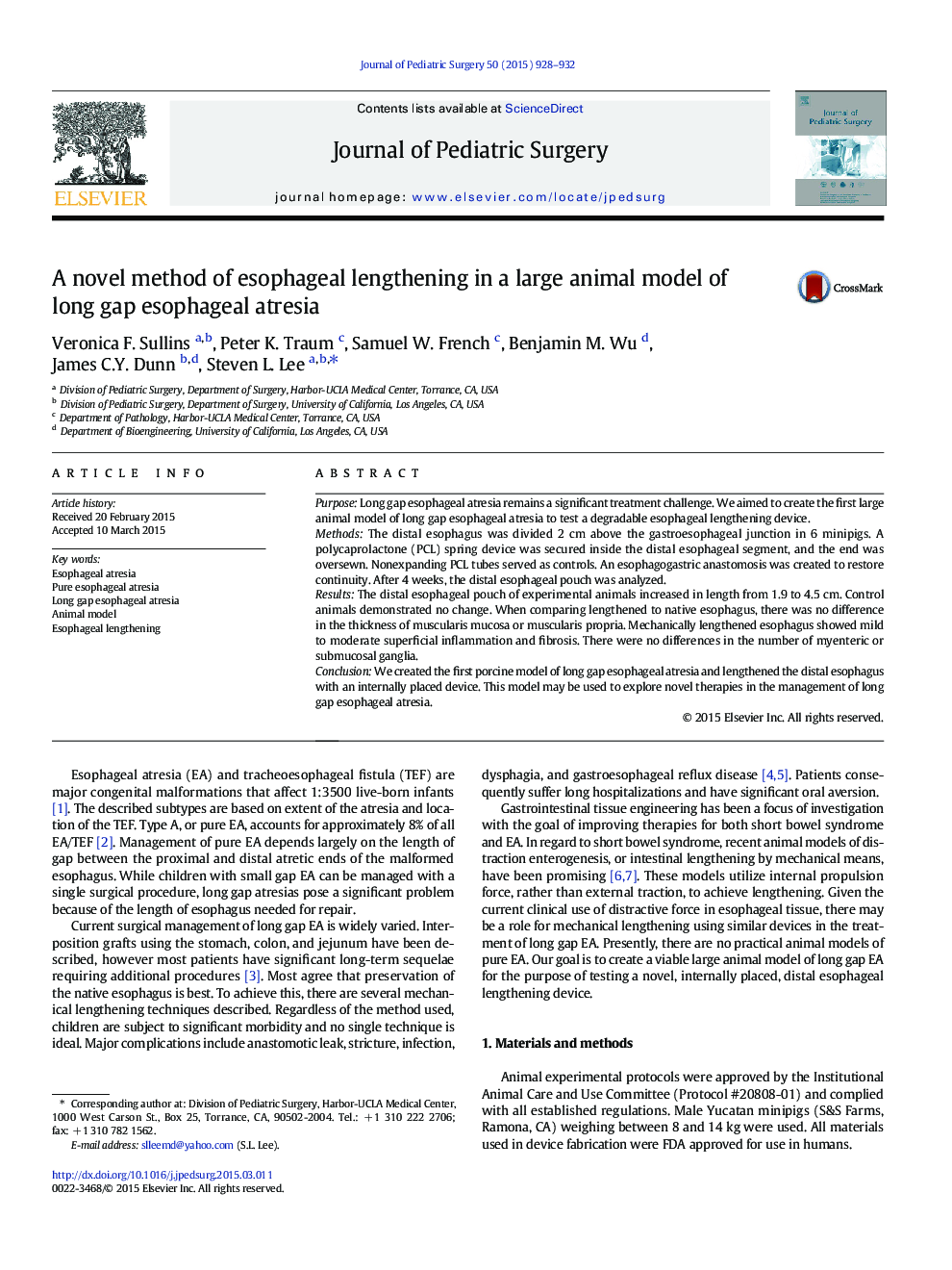| Article ID | Journal | Published Year | Pages | File Type |
|---|---|---|---|---|
| 4155039 | Journal of Pediatric Surgery | 2015 | 5 Pages |
PurposeLong gap esophageal atresia remains a significant treatment challenge. We aimed to create the first large animal model of long gap esophageal atresia to test a degradable esophageal lengthening device.MethodsThe distal esophagus was divided 2 cm above the gastroesophageal junction in 6 minipigs. A polycaprolactone (PCL) spring device was secured inside the distal esophageal segment, and the end was oversewn. Nonexpanding PCL tubes served as controls. An esophagogastric anastomosis was created to restore continuity. After 4 weeks, the distal esophageal pouch was analyzed.ResultsThe distal esophageal pouch of experimental animals increased in length from 1.9 to 4.5 cm. Control animals demonstrated no change. When comparing lengthened to native esophagus, there was no difference in the thickness of muscularis mucosa or muscularis propria. Mechanically lengthened esophagus showed mild to moderate superficial inflammation and fibrosis. There were no differences in the number of myenteric or submucosal ganglia.ConclusionWe created the first porcine model of long gap esophageal atresia and lengthened the distal esophagus with an internally placed device. This model may be used to explore novel therapies in the management of long gap esophageal atresia.
